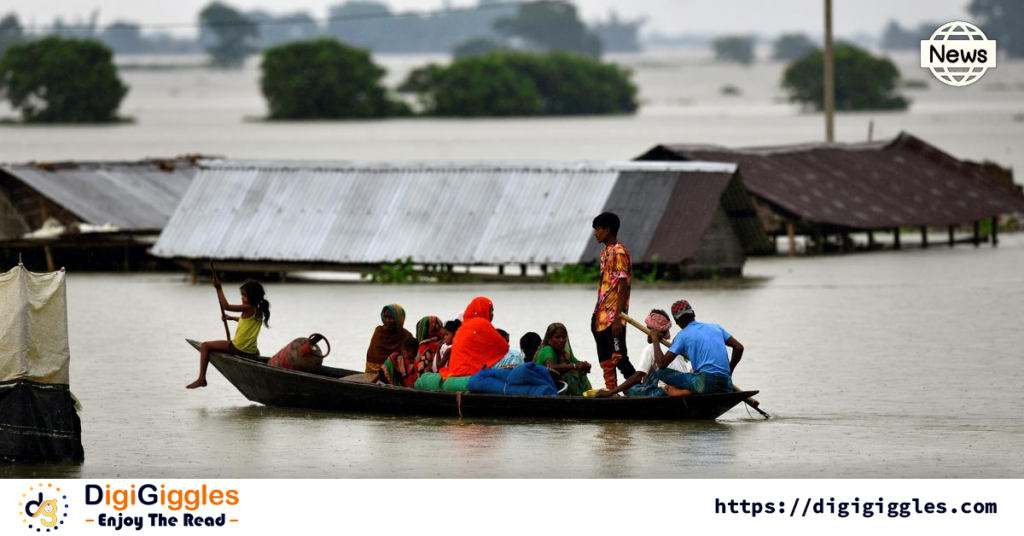
Assam has been grappling with severe floods, resulting in tragic losses and widespread displacement. As of the latest reports, 26 lives have been lost, and over 1.61 lakh people have been severely affected, many of whom are now seeking refuge in relief camps. The relentless monsoon rains have caused rivers to overflow, inundating vast areas across the state. The worst-affected districts include Darrang, Dhemaji, and Barpeta, where entire villages are submerged, homes destroyed, and livelihoods disrupted.
Local authorities, along with the National Disaster Response Force (NDRF) and the State Disaster Response Force (SDRF), are working tirelessly to provide relief and rescue operations. Boats and helicopters are being used to evacuate stranded residents from flood-hit areas. Despite these efforts, the situation remains dire, with continuous rainfall hampering rescue and relief operations. Assam Chief Minister Himanta Biswa Sarma visited several affected areas to assess the situation and reassure the residents. “We are doing everything in our power to ensure that those affected by this calamity receive the necessary assistance. Relief camps have been set up, and we are ensuring that there is no shortage of food, water, and medical supplies,” he said.
The government has set up over 500 relief camps across the state, providing shelter to thousands of displaced families. In these camps, the authorities are providing basic amenities, including food, clean drinking water, and medical aid. However, the sheer scale of the disaster has put immense pressure on these resources. The Chief Minister also announced an ex-gratia of ₹4 lakh for the families of the deceased. Financial assistance is also being extended to those who have lost their homes and belongings in the floods.
In the flood-ravaged district of Dhemaji, 45-year-old Radha Devi recounted her harrowing experience. “The water rose so quickly. Within hours, our home was underwater. We had no choice but to leave everything behind and run,” she said, tears welling up in her eyes. Like Radha, many others have similar stories of loss and survival. Children are particularly vulnerable in these situations. Many have been separated from their families in the chaos. Efforts are underway to reunite them, but the process is slow and challenging.
The floods have not only caused immediate human suffering but also long-term environmental and economic impacts. Agricultural fields are submerged, withstanding severe damage, which will undoubtedly affect the state’s economy in the coming months. Livestock losses are also significant, further impacting the livelihoods of rural communities.
The inundation has disrupted transportation and communication networks, complicating relief efforts. Roads and bridges have been washed away, isolating many areas and making it difficult for aid to reach those in need. Experts have attributed the severity of the floods to climate change and poor river management. Environmentalists are urging the government to implement sustainable flood management practices and improve infrastructure to withstand such natural disasters.
As Assam continues to battle the floods, the resilience and solidarity of its people remain a beacon of hope. Community members, volunteers, and NGOs are stepping up to support relief efforts, showcasing the indomitable spirit of the region. The state and central governments, along with international aid organizations, are focusing on immediate relief and long-term rehabilitation. The road to recovery will be long and arduous, but with collective efforts, Assam hopes to emerge stronger from this calamity.